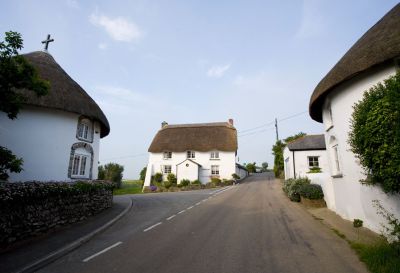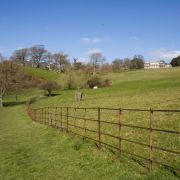
Veryan is most famous for its nineteenth century thatched Round Houses There are five in all, two pairs of which stand at each end of the village and another in the centre. They were originally built by a missionary named Reverend Jeremiah Trist for his daughters. In a round house there are no corners where the devil can hide. A crucifix on the top of each one adds extra protection!
The present name is a corruption of St Symphorian, the Parish saint, which in 1525 had become St Severian leading eventually to St Veryan. The parish stretches from the south coast of Cornwall from Portholland to Pendower and inland nearly to Tregony encompassing the villages and hamlets of Veryan Churchtown, Veryan Green, Portloe, Carne, Camels, Treviskey, and Treartha.
Veryan's only pub is the delightful and centrally located New Inn. Just up the road the Roseland Stores is the only shop in Veryan, serving the community as post-office, grocers and off-licence.
Close to Veryan is Carne Beacon, a Bronze Age grass covered barrow and reputedly the e burial place of the legendary 6th century chieftain, Geraint of Dumnonia from whom the nearby village of Gerrans gets its name. Not far from here is Veryan Castle, a small Iron Age hill fort.
Melinsey Mill, a lovingly restored medieval water mill, is situated in a lush wooded valley about a mile out of Veryan on the St Mawes road,. It was previously used to mill corn, in fact the name derives from melyn meaning corn mill.. It now houses a small mill museum and a crafts shop where you can get some wonderful willow creations. On a hot summers day there is nothing better than tucking into a cream tea or a home-made cake by the millpool. Admission is free.










